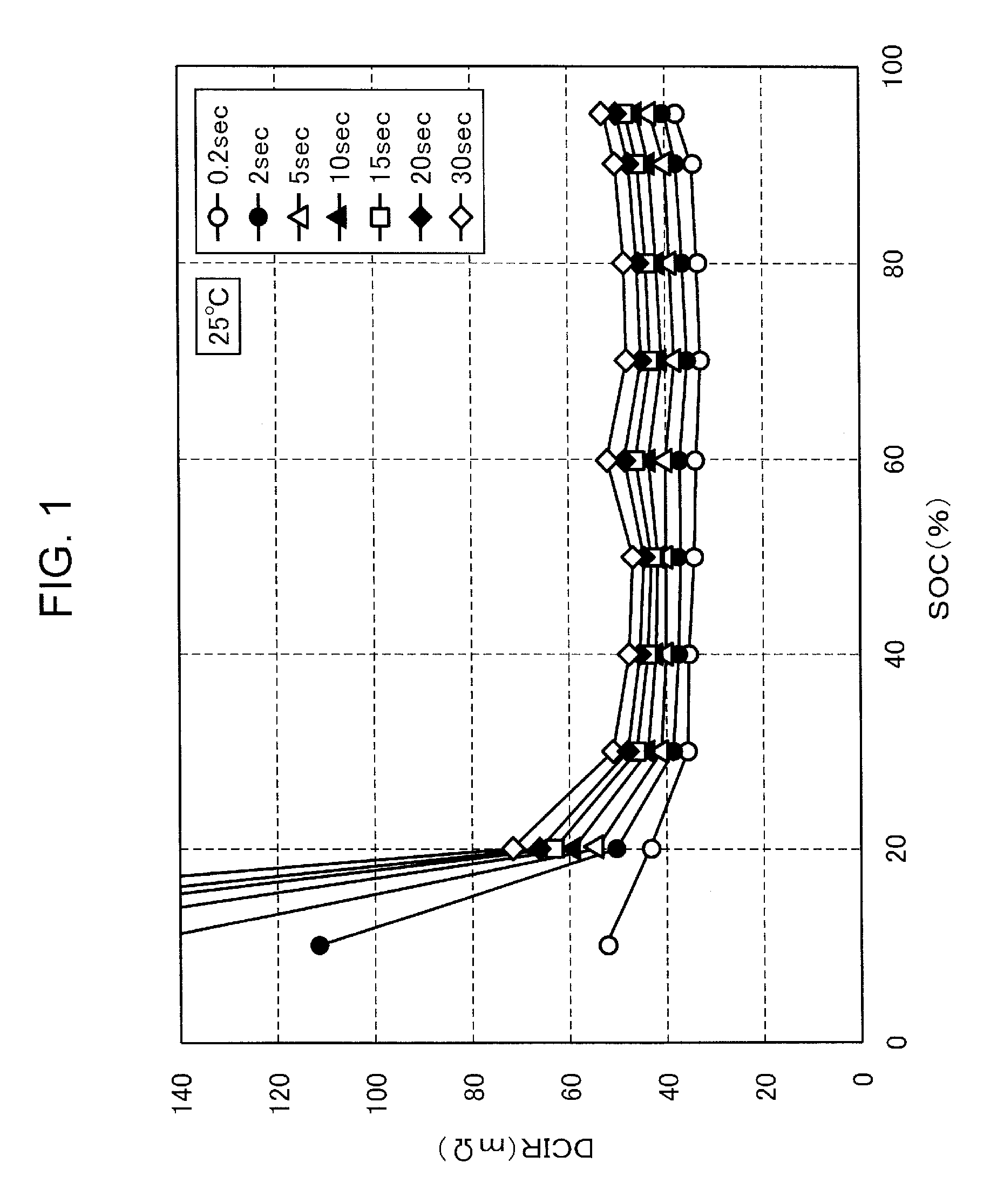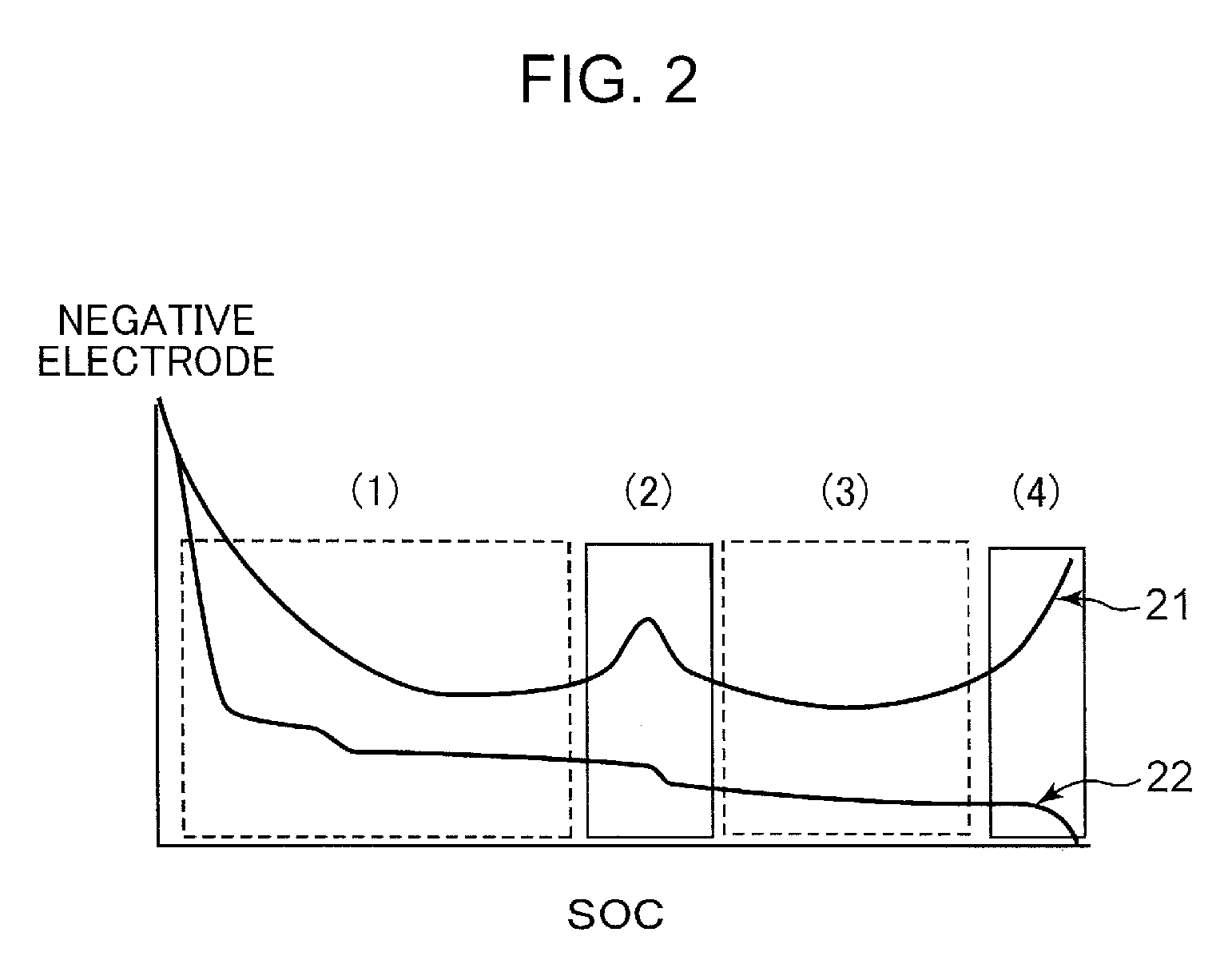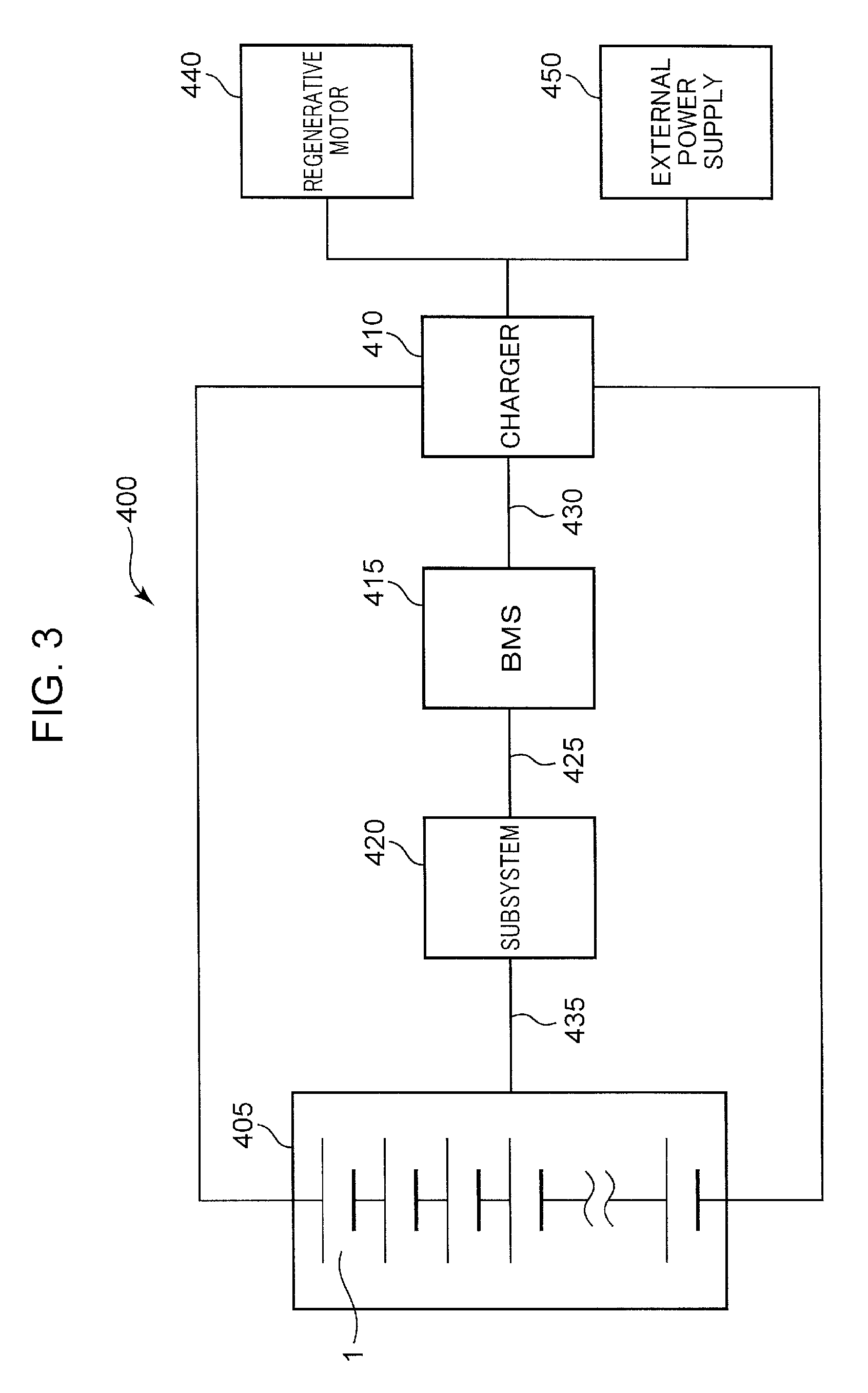Lithium ion battery charging method and battery-equipped device
a technology of lithium ion batteries and charging methods, which is applied in the direction of electrochemical generators, secondary cell servicing/maintenance, transportation and packaging, etc., can solve the problems of reducing the capacity of the battery, serious spoilage of the battery, and reducing so as to reduce the time required for charging and improve the convenience of the battery. , the effect of sacrificing the capacity and the life characteristics of the battery
- Summary
- Abstract
- Description
- Claims
- Application Information
AI Technical Summary
Benefits of technology
Problems solved by technology
Method used
Image
Examples
working examples
[0087]Next, the present invention is specifically described on the basis of working examples and comparative examples. However, the present invention is not limited to the working examples below.
[0088]A battery 3 shown in FIG. 4 was manufactured as described below. That is, as a positive electrode plate 301, a positive electrode plate obtained by applying a positive electrode mixture to an aluminum foil collector was used. As a negative electrode plate 303, a negative electrode plate obtained by applying a negative electrode mixture to a copper foil collector was used. The thickness of a separator 305 was set to 20 μm. A positive electrode lead collector 302 and the aluminum foil collector were laser-welded. A negative electrode lead collector 304 and the copper foil collector were resistance-welded. The separator 305 was arranged between the positive electrode plate 301 and the negative electrode plate 303 and wound to configure a cylindrical electrode plate group 312. Thereafter, ...
PUM
| Property | Measurement | Unit |
|---|---|---|
| pulse time | aaaaa | aaaaa |
| charging voltage | aaaaa | aaaaa |
| particle diameter | aaaaa | aaaaa |
Abstract
Description
Claims
Application Information
 Login to View More
Login to View More - R&D
- Intellectual Property
- Life Sciences
- Materials
- Tech Scout
- Unparalleled Data Quality
- Higher Quality Content
- 60% Fewer Hallucinations
Browse by: Latest US Patents, China's latest patents, Technical Efficacy Thesaurus, Application Domain, Technology Topic, Popular Technical Reports.
© 2025 PatSnap. All rights reserved.Legal|Privacy policy|Modern Slavery Act Transparency Statement|Sitemap|About US| Contact US: help@patsnap.com



